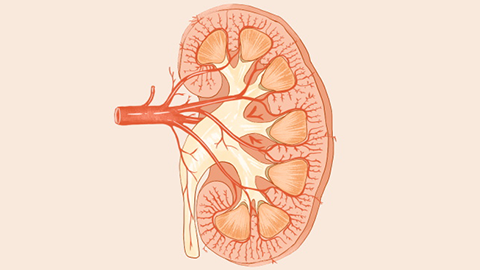What are the causes of bilateral renal pelvis dilation?
Generally, duplicated renal pelvis separation may be caused by physiological urine accumulation, congenital developmental differences, mild urinary tract obstruction, urinary system infection, vesicoureteral reflux, and other reasons. It is recommended to seek timely medical consultation to identify the underlying cause and receive symptomatic treatment under a doctor's guidance. Detailed analysis is as follows:

1. Physiological urine accumulation: Excessive bladder fullness during examination may cause urine reflux into the renal pelvis, resulting in temporary separation that can return to normal after urination. Avoid excessive water intake before examination; repeat the examination after urination without special treatment required.
2. Congenital developmental differences: Some individuals have slightly wider renal pelvis structures from birth, causing mild separation without hydronephrosis or functional abnormalities, which is considered a normal developmental variation. Regular ultrasound monitoring is sufficient; maintain regular作息 (作息 should be translated as "作息" is missing in the translation, please confirm)作息 and avoid excessive fatigue.
3. Mild urinary tract obstruction: Urinary stones, polyps, etc., may hinder urine outflow, increasing pressure within the renal pelvis and causing separation, possibly accompanied by dull pain in the waist or abdomen. Smaller stones can be expelled by drinking more water and appropriate physical activity. Patients may follow medical advice to use medications such as Lithiasis Granules, Shenshitong Granules, or Tamsulosin Hydrochloride Sustained-Release Capsules to assist stone removal.
4. Urinary system infection: Bacterial infection-induced renal pelvis inflammation causes congestion and edema of the renal pelvis mucosa, leading to separation accompanied by frequent urination, urgent urination, and fever. Patients may follow medical advice to use medications such as Cefixime Dispersible Tablets, Levofloxacin Hydrochloride Capsules, or Amoxicillin and Clavulanate Potassium Tablets to control the infection.
5. Vesicoureteral reflux: Functional abnormalities at the ureterovesical junction cause urine reflux into the renal pelvis, triggering separation and possibly recurring infections. Mild reflux can be improved by timed voiding and avoiding holding urine. Severe cases may require ureteral reimplantation surgery to repair the reflux channel. Post-surgery, patients should follow medical advice to use medications such as Cefaclor Dry Mixable Suspension, Nitrofurantoin Enteric-Coated Tablets, or Compound Shihwei Tablets to prevent infections.
In daily life, cultivate habits of drinking plenty of water and not holding urine to maintain urinary tract patency. Maintain good personal hygiene to prevent urinary system infections. Undergo regular urinary system checkups to detect and address abnormalities promptly, preserving kidney health.




